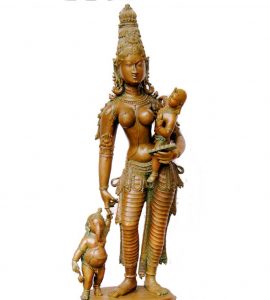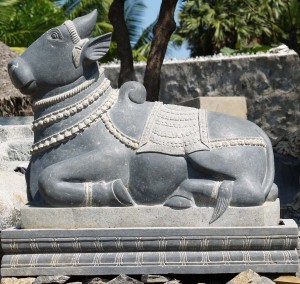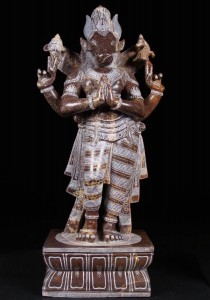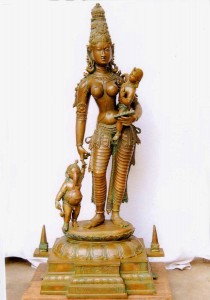“Worship of Shailaputri gives Stability, Health, Spiritual Awareness, Love, Compassion and Dignity.”

The first form of the Hindu Goddess mother Durga among her nine forms is Shailaputri. ‘Shail’ means mountains. ‘Putri’ means daughter. As such she is the Daughter of the Mountains, popularly known as Uma-Parvati in Puranic mythology.
The Hindu Goddess Shailputri is venerated on the first day of the Navaratri prayers. She is said to be the embodiment of the power of the Hindu Gods Brahma, Vishnu and Shiva. She is described as Hindu Goddess Parvati, the consort of Lord Shiva and the mother of Ganesha and Murugan.
Shailaputri was born to Daksha Prajapati. Once Daksha had organized a big Yagna and did not invite Shiva. But Sati being obstinate, reached there against Siva’s advise. Thereupon Daksha insulted Shiva. Sati could not tolerate the insult of husband and burnt herself in the fire of Yagna. Shiva carried her and shook the world with his Thandava. Seeing his agony, Lord Vishnu used his sudharsana chakra to dismember the corpse. They fall on to the earth and became Shakti Peeths. In her next birth, Sati, became the daughter of Himalaya as Parvati. In the Nava Durga pantheon she is referred as Shailaputri.



